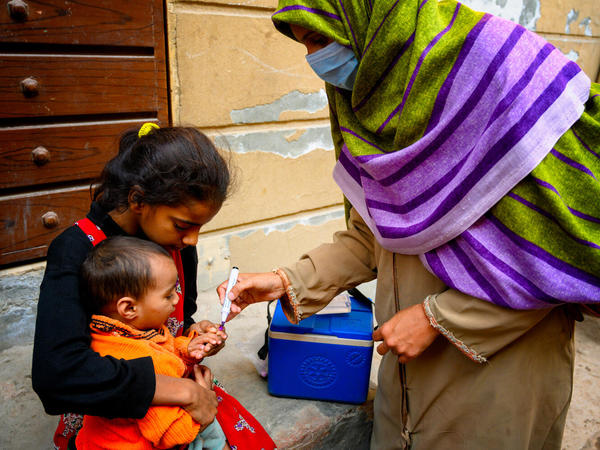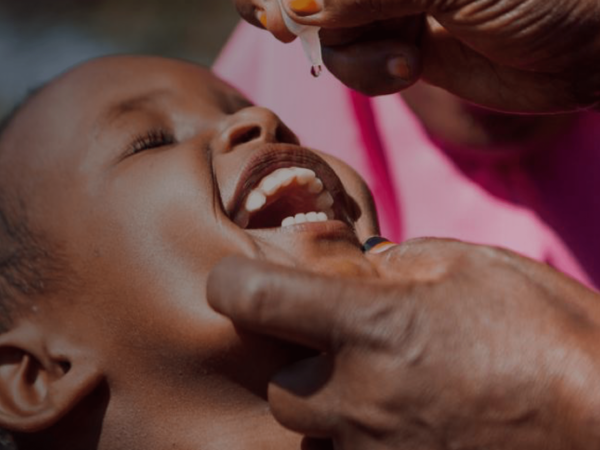Mindsets: Accepters and Rejecters
What motivates people to say yes to polio vaccination? For many, the decision is simple—awareness of how close they are to catching polio and what they can do to prevent is sufficient for them to accept the vaccine. We call these individuals, Accepters.
The second mindset is Rejecters. Rejecters are typically a minority of the at-risk population, but they often cluster in communities that provide a supportive social and cultural environment for their disbelief and suspicions about vaccination. In areas with low population immunity, Rejectors can contribute to an outbreak.
Both acceptors and rejecters may also be "mobile." That is to say, they frequently travel to different geographical regions, and are more difficult to effectively reach. Mobile populations must be reached with tailored communications.
Accepters
In all countries of the world, accepters constitute the vast majority of people. The decision to vaccinate is simple because they are predisposed to accept vaccines and vaccination is a matter of common sense. This means that initial communications do not need to persuade that vaccination is necessary—they already believe it. Instead, communications can focus on creating awareness of polio and the immunization campaigns.
Key Considerations of Accepters
-
Accepters tend to trust authority figures and healthcare providers, including our health workers.
-
Accepters are sensitive to the threat that polio poses to their children.
-
Accepters understand the need to vaccinate their children, and are receptive to polio communications.
-
Although accepters tend to be more open to repeated vaccinations if they understand the necessity of them, the frustration from repeated campaigns could change their mind if handled poorly, causing them to become rejecters.
The Accepter's Journey
The Accepter's Journey is characterized by brevity and lack of resistance across the stages that facilitate the health workers' performance at the moment of contact. Awareness, Resonance, and Consideration occur simultaneously, as messages around immunization align to their existing opinions.
Remember, over time, repeated polio vaccine campaigns can begin to test the patience of even the most sympathetic Accepter, and so it becomes important to shift communications to focus on themes beyond just awareness over time.
Rejecters
Rejecters as individuals do not pose a substantial threat to eradication. However, a cluster of rejecters in areas of low population immunity and high virus susceptibility can be a breeding ground for the virus. In some cases, rejecters can be a small number of individuals who have a broad and strategic influence over our target population. Thus, it is important not only to know whom the rejecters are, but also to understand which rejecters are strategically important to focus on.
They are defined by a reluctance to vaccinate their children, or a propensity to discourage vaccination of other children. A different communications approach will be needed for this group.
Key Considerations of Rejecters
-
The decision to vaccinate is complicated and risky. Rejecters may be influenced by uncertainty and rumors about the benefits and dangers of polio vaccine.
-
They may be more challenged to satisfy basic needs, such as food, water, shelter, power security, and safety, and they may prioritize these over vaccination, especially after repeated campaigns.
-
They may be prohibited from getting the vaccine by local social and cultural norms.
-
They may not perceive their family members, neighbors, community leaders, religious leaders, or other influencers to be in support of vaccination children against polio.
-
In extreme circumstances, they may be witnesses to acts of violence from others within their community over the vaccine.
-
Low literacy and education rates may impede communications from effectively educating them about polio, and may also support rumors or other alternative explanations that are harmful.
-
They may heed traditional, cultural, or religious understandings of medicine over scientific understandings. This may mean that the concept of preventative medical care, including vaccines, must be explained differently to resonate.
-
They may actively distrust the institutions, organizations, and individuals that polio communications come from, including their national government, Ministry of health, and UNICEF, WHO, or other international organizations.
-
They may have an established habit of only seeking medical care after something is painful or obviously wrong, and they may not have the notion or understanding of incurable, yet preventable diseases like polio.
-
Their refusal may be outright, or it may be disguised through a falsely reported absence of their child.
The Rejecter's Journey
Rejecter journeys tend to be specific to the local conditions and require a tailored, adaptive approach to communications and media channels.
For example, mass communications that are successful in reaching the majority in a given population may not lead individuals to seriously consider vaccination because they belong to a specific subcultural community, and the communications fail to resonate with their specific cultural values.
Within any polio outbreak, rejecter journeys can become a source of increasing risk as response efforts continue to go on,, especially as vaccination fatigue can cause formerly accepting individuals to reject as well, potentially reducing the base of accepters and increasing those who reject.
Considerations for Mobile Populations
With mobile populations, we must consider the best ways we can reach and vaccinate them. Making this happen typically requires physical media at key transit points, and depends heavily on interpersonal communications to succeed with an interaction that involves a caregiver who is typically rushed, unprepared - and perhaps unwilling - to receive a health service at this time, particularly if they have received the same service multiple times before.
Additionally, the motivations behind transit itself should be leveraged to incentivize vaccination. These mobile, potentially displaced groups are cases of "strangers in a strange land," and we have the opportunity to resonate with them if our messages recognize their place of origin, their destination, or their purpose for traveling. Brand familiarity is an important source of trust that should be used in communications at transit points.
Key Factors for Mobile Populations
-
Communications need to be tailored to reflect the mobile audience's culture and country of origin.
-
If polio was an issue in their place of origin, synchronize messages and branding with place of origin and /or place of travel.
-
Identify and use spokespeople and sources they consider credible to build trust.
-
-
Mobile audiences may be less familiar with polio, so it's important introduce it as an important regional health issue.
-
They may be less familiar with polio vaccination, so it's important to introduce it as a widely accepted regional social norm.
-
Use appropriate medias channels, such as:
-
Booths at major transit locations
-
Mobile vans displaying communication materials
-
City buses
-
SMS and voice messaging services targeted to those who travel across borders
-
Other outdoor media in public spaces such as railway stations; buses, bus stops, markets, dairy booths, banks, and schools
-
-
If possible and when appropriate, bundle polio vaccination with other messages about desired health services.
-
Utilize multipurpose communications, such as brochures that can be folded into small toys for children.
Learn More
Explore the other two learning modules in this 3-step tutorial to design evidence-driven communication strategies to help vaccinate every child.
Integrate communications tactics and understand their strengths and weaknesses, then evaluate performance.
You cannot do everything and your ability to prioritize your interventions and target behaviours is paramount. One simple way to do this is to evaluate importance of the behavior and its changeability.



